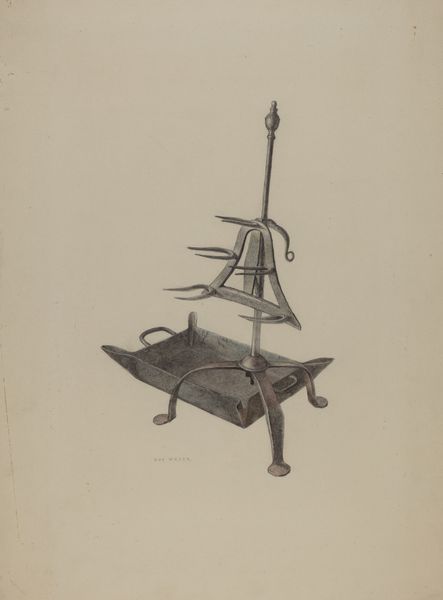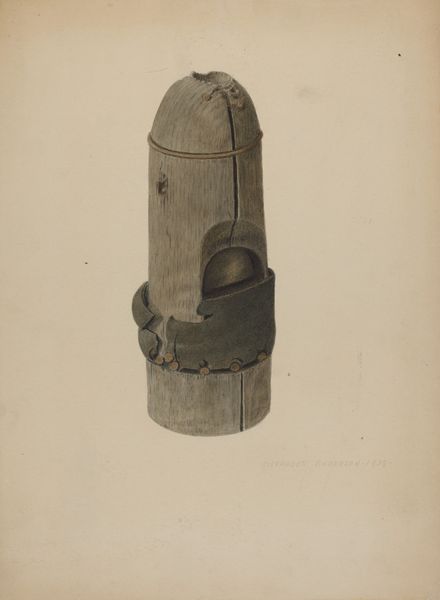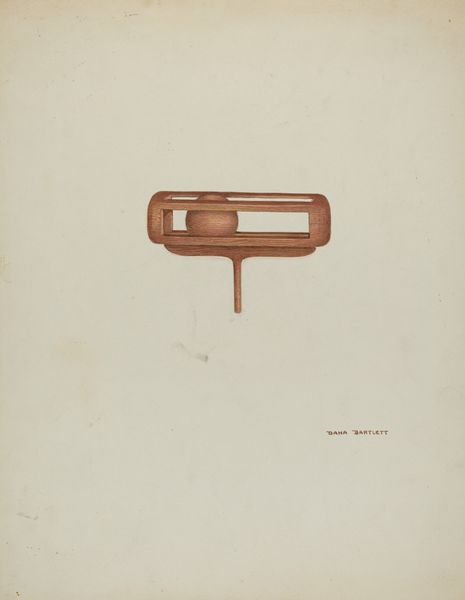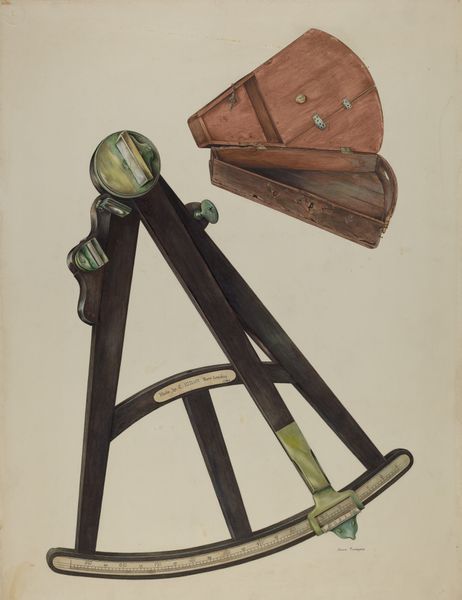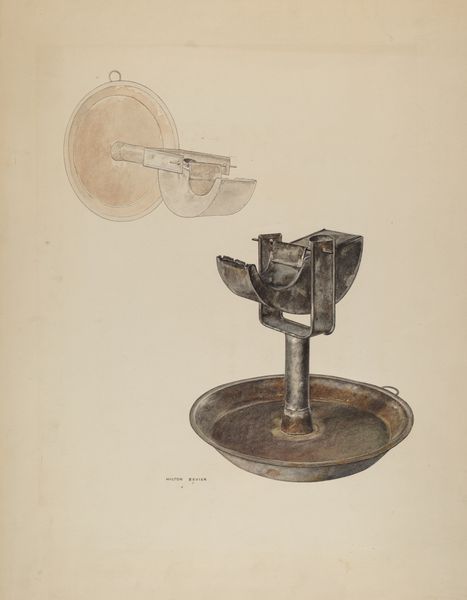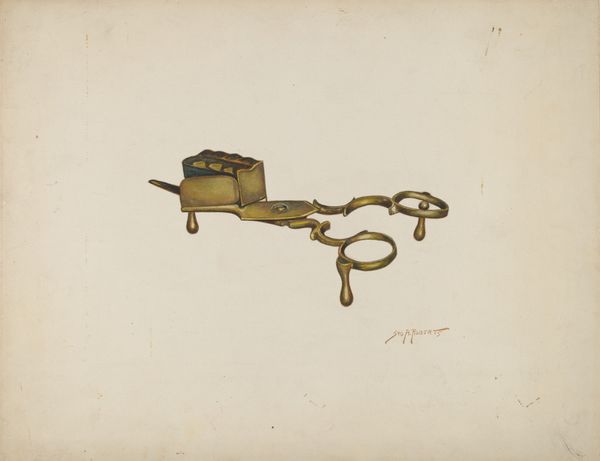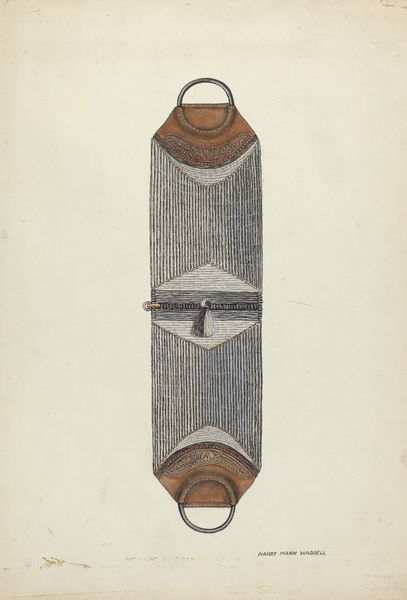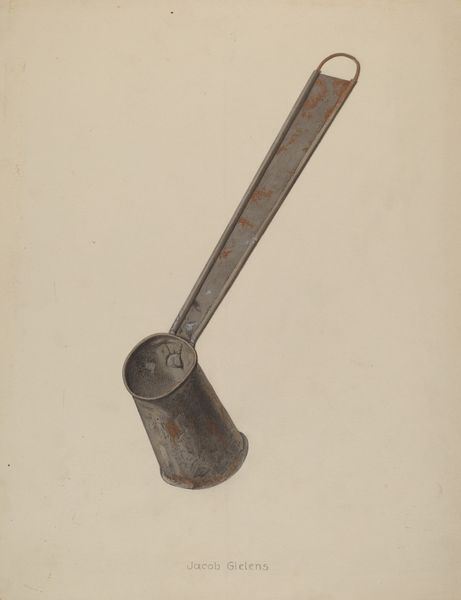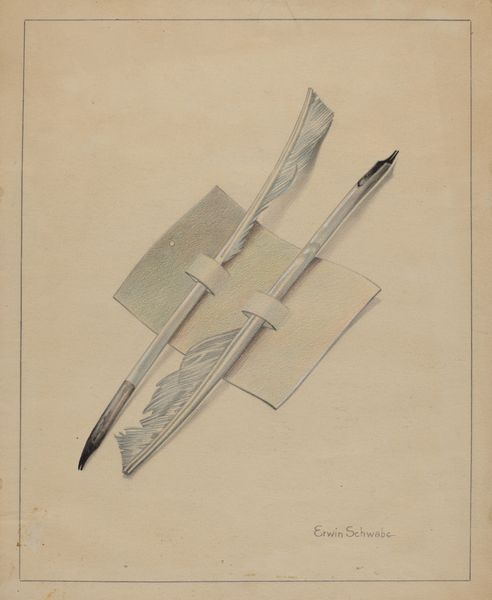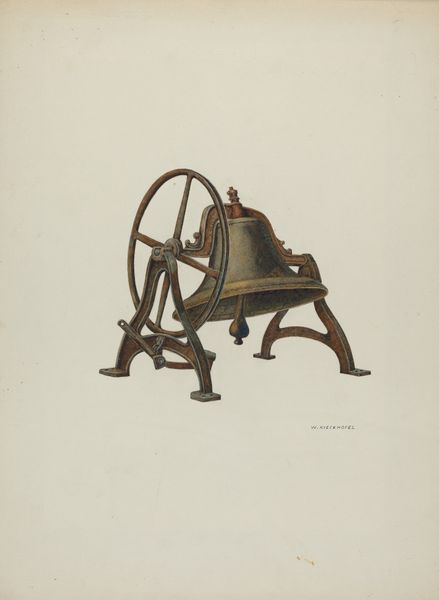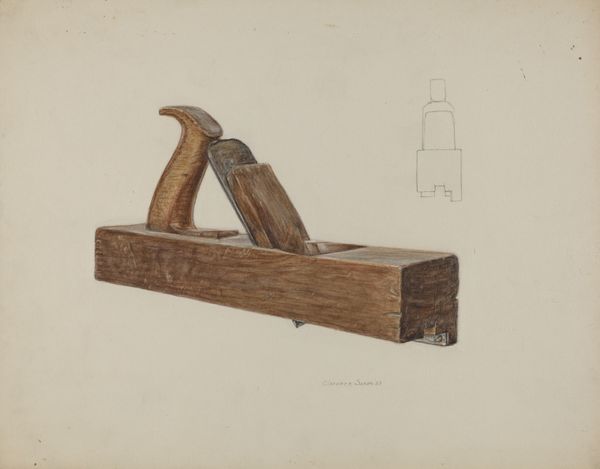
drawing, paper, pencil
#
drawing
#
paper
#
pencil
#
realism
Dimensions: overall: 30.1 x 22.9 cm (11 7/8 x 9 in.) Original IAD Object: 3 1/2" high; 3 1/4" long
Copyright: National Gallery of Art: CC0 1.0
Curator: I find the composition remarkably stark. Such direct, unwavering realism lends an air of quiet contemplation. Editor: Indeed. We’re looking at "Lamp," a pencil and paper drawing completed around 1936 by Charlotte Winter. It's a work that sits so serenely. Its impact, despite the potentially mundane subject matter, is significant. I wonder what role images of manufactured objects played at that time. Curator: Its stillness and the focus on form is compelling. The pencil work creates a rather photographic clarity—each metallic facet meticulously rendered, reflecting an ambient light that infuses the piece. Its texture looks almost photographic, yet it's so decidedly hand-crafted. The balance between hyperrealism and tactile artistic intervention fascinates. Editor: In the Depression Era, the home took on increased social and personal significance. Objects within it also resonated more profoundly. Perhaps the domestic sphere of the time framed commonplace manufactured items in this way? To what degree was mass culture absorbed, resisted, or perhaps even transformed? Curator: The lamp form is almost like an emblem stripped bare—its function almost dissolved by the careful, loving rendition of its surfaces. This almost feels like it leans into a visual purity and reduced presence; what this thing *is*, removed from cultural context. I almost forget what it is actually *for*. Editor: It does suggest Winter found, perhaps, unexpected nobility in this otherwise unremarkable item from modernity. We have to consider the potential audience for the work too. Who might have connected with this subject at that moment in time, and why might this ordinary item have sparked contemplation? Curator: An astute consideration of art's social impact... Ultimately, its enduring impact may well stem from how we perceive everyday structures differently after viewing. Editor: Yes, and it serves as a reminder of the myriad ways that people, through objects, reveal social and material histories.
Comments
No comments
Be the first to comment and join the conversation on the ultimate creative platform.
